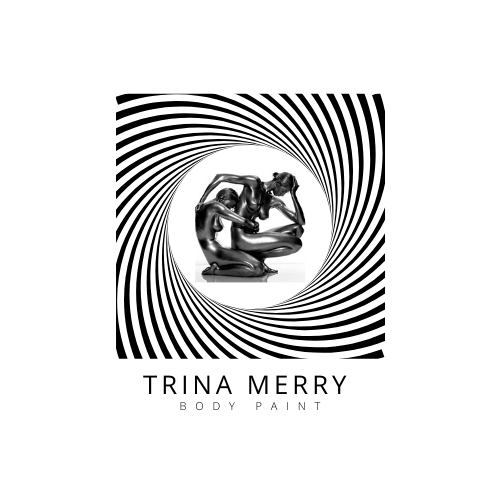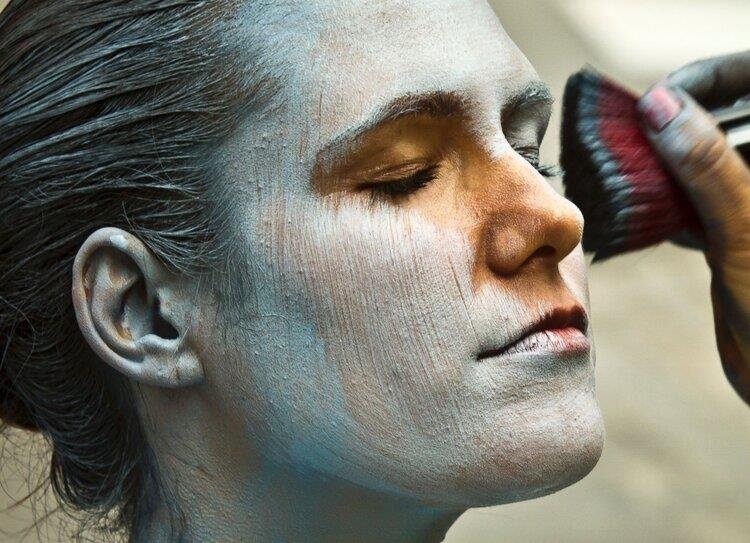Do you remember the scene in James Bond’s “Gold Finger,” where Jill Masterson dies from skin asphyxiation after having her body painted gold? While iconic, the scene is scientifically inaccurate. Asphyxiation by bodypaint is nearly impossible since we breathe through our mouths and noses. While that is excellent news, we are still not out of the clear. There are some important safety concerns to consider before getting started, such as learning about the safest body paint choices, choosing the right bodypaint for your skin and project, ensuring proper ventilation, and maintaining hygienic equipment.
There are several variations of bodypaints, each having their own purposes. The most common types of bodypaints are water-based, latex, alcohol-based, silicone, metallic, glitters, cream-based, henna, and acrylic. Some people may have allergies to titanium, latex, metallic makeup, etc. so skin tests should always be performed before a painting session. Some bodypaints should be used with caution or entirely avoided, such as black henna. Black Henna can contain unlawful amounts of toxic chemicals that can leave the skin scarred. Water-based bodypaints are produced under strict FDA guidelines, meaning that most water-based bodypaints are non-toxic, hypoallergenic, and easily removable from the skin. Water-based airbrush bodypaint is considered the safest body paint when used correctly under proper ventilation conditions.
Proper ventilation is essential for artists that are regularly exposed to solvents, isocyanates, pigments, and other additives in paints and coatings. Some materials can cause toxic effects immediately, producing symptoms such as headaches and nausea, while some materials present symptoms after long periods of exposure. An independent study done by Barry A. Miller and Aaron Blair revealed that artists that are frequently exposed to these materials have a higher chance of developing health issues such as cancer, leukemia, and heart disease. Artists should practice using appropriate safety equipment such as respirators, spray booths, eye safety wear, rubber or latex gloves, and coveralls. Secondly, artists such ensure that they are practicing appropriate ventilation techniques including, filtering out harmful chemicals towards an exhaust and diluting contaminated air with fresh air (dilution ventilation).
In addition to ventilation, keeping brushes clean is a critical aspect in preventing injury while bodypainting. Dirty brushes can promote breakouts and harmful infections. Brushes need to be brand new or boiled before your painting sessions. New bodypaints should be applied to a palette or put in a cup to avoid spreading fungus and viruses. This is important because some fungi and viruses cannot be removed by traditional brush and makeup cleansers (which only remove makeup and some bacteria). Contrary to popular belief, 70% rubbing alcohol will only kill some of the bacteria present on brushes, and any percentage above 70% causes the bacteria cells to close and form a protective shell and does not kill them. Only bleach, heat (boiling water or sterilization ovens), or freezing will completely kill all fungus, viruses, and bacteria that are harmful to humans. It is recommended that artists clean their brushes several times a week to prevent build-up that can clog pores, spread bacteria, and aggravate your client’s skin. In addition to maintaining clean brushes, bodypaint should not be applied to wounds, rashes, herpes breakouts, canker sores, etc. which can also promote skin infections.
With safe and cautious steps, bodypainting can be harmless and a beautiful way for artists and clients to express themselves. What do you consider the safest body paint and what precautions do you make to keep your clients safe? Comment below and let us know!

